In this bi-weekly series reviewing classic science fiction and fantasy books, Alan Brown looks at the front lines and frontiers of the field; books about soldiers and spacers, scientists and engineers, explorers and adventurers. Stories full of what Shakespeare used to refer to as “alarums and excursions”: battles, chases, clashes, and the stuff of excitement.
There are many great and memorable characters who have appeared in works of science fiction, notable for all sorts of reasons. But devil-may-care diplomat Jame Retief is easily one of the most fun. Created by the prolific Keith Laumer, himself a former foreign service officer, Retief is competent, capable, and completely unbound by any fealty to rules or regulations. The stories are a mix of slapstick comedy and gritty action scenes, the fictional equivalent of a tasty snack.
When he appeared in the early 1960s, the character of Jame Retief was immediately popular among science fiction fans. While Laumer was not given to much description in his stories, as the series went on we learned Retief was handsome and over six feet tall, with dark hair, wide shoulders, and a narrow waist. He was diligent in his duties, clever and insightful, and willing to respect and listen openly to anyone he met, which set him apart from his peers. And while I don’t ever remember being given any backstory that explained where he gained the skills, he was talented at boxing, fencing, all forms of physical combat, driving, and piloting both air and space craft. Moreover, he was not afraid to have a good time when he was off duty. Many of the readers of science fiction in the 1960s were World War II veterans who were now living a more mundane existence, and to them the character was like a breath of fresh air, blowing through bureaucracies and regulations, and doing what it took to get the job done.
The one complaint I have is that the stories are often dismissive of female characters, clearly a product of their times. The vast majority of the female characters who appear are either unlikeable jerks who get in Retief’s way, or objects of lust (the term “love interest” does not really apply, as Retief shows no desire for long-term relationships). Even among the alien races, which are entertainingly strange and diverse, males dominate society.
Buy the Book
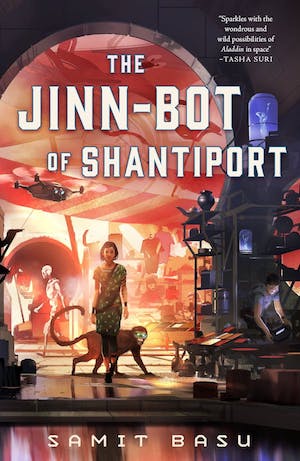

The Jinn Bot of Shantiport
Laumer wrote much of his work in the era when science fiction and fantasy novels were much shorter than the 100,000+ words you often see today, so in this column I will look at two of the books featuring Retief. The first, Envoy to New Worlds, while not billed as a short story collection, is exactly that. The second, Retief and the Warlords, an actual novel, comes from later in the series, and was selected not for any special reason, but because I found it in the same cabinet as the first book.
Interestingly, the first Retief story to appear, “Diplomat-at-Arms,” which appeared in Fantastic, January 1960, was the last story in the series chronologically. After that, almost all the magazine appearances of the stories were in Worlds of If, starting soon after Frederik Pohl stepped in as editor. Unlike the stodgier John Campbell over at Astounding, Pohl had a penchant for stories with a satirical or humorous twist. Over time, the Retief stories were collected in a variety of anthologies, and longer tales were published in novel form. Because the stories reappeared in different collections over the years, it is difficult to say just how many original Retief books appeared, but if I am counting right, there were at least seven novels and over three dozen short stories in the series, with Laumer writing them right up to his death and some appearing posthumously.
About the Author
Keith Laumer (1925-1993) was an American science fiction and fantasy writer whose work was very popular in the mid- to late 20th century. He was a military veteran and foreign service officer. His work was always action-packed and sometimes humorous, running the gamut from tongue-in-cheek satire to slapstick.
I have reviewed other works by Laumer before in this column, including the collection The Compleat Bolo, the short novels The Glory Game and End as a Hero, and the parallel world short novels Worlds of the Imperium and The Other Side of Time. Additional biographical information is contained in those reviews, and there are a few of Laumer’s stories and novels available to read for free on Project Gutenberg, with some of those are stories featuring Retief.
By Other Means
The adventures of Jame Retief draw heavily on the four years Laumer spent in the Foreign Service from 1956-1960, serving in the nation then called Burma (now known as Myanmar). It was a time when the diplomatic world was in turmoil. The older diplomats had been brought up in a whole different world, an international order dominated by the colonial great powers of Europe—an order that had been swept away by World War II. Younger diplomats were coming into the service with wartime experience their elders often lacked, and there were inevitable clashes in their worldviews. One of the key lessons learned from World War II was the danger of appeasement, and the lesson that dictatorial nations could not be placated by allowing them to occupy all or part of neighboring nations.
What replaced the multipolar world of the 19th and early 20th century, in which power was balanced between various nations, was a bipolar world split between the capitalist nations aligned with the United States and the communist countries aligned with the Soviet Union. With both blocs possessing nuclear weapons, direct warfare between the great powers was unthinkable, and their conflict became known as the Cold War. The famous dictum of Prussian military philosopher Carl von Clausewitz which held that war is a continuation of politics by other means was turned on its head, with politics becoming a continuation of war by other means. The two opposing sides clashed through diplomacy, foreign aid, covert operations, and combat between proxy nations. On the US side, the policy was one of “containment,” keeping the communists from expanding, driven by the fear that appeasement would create a “domino” effect.
You can see strong echoes of the Cold War in the adventures of Retief. As the series goes on, the alien Groaci can be seen as filling the role of the real-world Soviet Union. The galaxy, while avoiding full-scale war, is constantly torn by border clashes, misunderstandings, and attempts at sabotage and economic dominance. It is a setting where small actions, at the right time and place, can have enormous consequences—a setting that cries out for a larger-than-life character like Jame Retief.
Envoy to New Worlds
This book was first published in 1963 as half of an Ace Double book, not a novel, but consisting of stories that appeared in Worlds of If magazine from 1961 to 1962.
The first story in the book, “Protocol,” which appeared in If as “The Yillian Way,” sets the tone for all the stories that follow. Ambassador Spradley is leading a mission from the Corps Diplomatique Terrestrienne, or CDT, to negotiate with the Yill, assisted by Second Secretary Ben Magnan and Third Secretary Jame Retief. The Yill seem not to understand the normal tenets of diplomacy, putting the Terrans in one demeaning situation after another. Spradley chalks it up to their inferiority, while Retief, the only member of the delegation who has learned the local language, realizes that these are deliberate slights, testing the Terrans. At a banquet, Retief horrifies the others by challenging a Yill performer to a duel, and then also challenges the Head of State. It turns out they had been looking for signs that Terrans were worthy of negotiating with as equals, so Retief’s boldness saves the day, although the Ambassador makes sure he gets no credit for his efforts.
The story “Sealed Orders,” which appeared in If as “Retief of the Red-Tape Mountain,” has Retief sent on an independent mission. Terran settlers on the planet Adobe have run afoul of previously unknown indigenous creatures, and if something isn’t done, war will break out. Retief is given detailed sealed orders to follow to the letter, but discovers that no one at headquarters even knows what the indigenous creatures look like. He hitches a ride on a mail ship, which doesn’t want to drop him where he needs to go because the shooting has already started. He insists, and joins up with the settlers fighting the “flap-jacks,” who resemble land-based manta rays, and move on tentacles around the perimeter of their flat bodies. Retief heads out, captures one of the aliens, and asks to be taken to his leader. Once there, he discovers that if the settlers and flap-jacks had communicated before shooting, they would have found that their interests did not clash after all. This was a nice story, showing that diplomacy can solve problems. And when Retief returns to base, he tosses out those still-sealed orders.
In “Cultural Exchange,” the newly promoted Magnan leaves Retief in charge of his desk, which coordinates cultural exchanges. The humorless Miss Furkle will be Retief’s assistant, and neither of them is happy about this. The bucolic planet Lovenbroy is nearing its grape harvest and looking for laborers. Retief learns that a tangled web of cultural exchanges are being used to bring young men, small arms, and even Bolo assault tanks to a rival planet that wants to invade Lovenbroy (the Bolos, when equipped with bulldozer blades, are oddly classed as earth-moving machines). Retief changes a few orders, modifies a few documents, and hoists the rival forces by their own petard just in time to travel to Lovenbroy and bask in the glow of his success.
In “Aide Memoire,” Magnan and Retief are dealing with the Fustians, a cockroach-like race, whose planet is coveted by the manipulative Groaci. The Groaci are squishy creatures with tentacles and eyes on stalks. There is a youth uprising among the Fustians, and Retief discovers the Groaci are behind it. There are plenty of twists, turns, and goofy alien names in this one, and you can see Magnan beginning to respect Retief’s results, if not his methods.
“Policy,” which appeared in If as “The Madman from Earth,” has Retief serving as Counsel, alongside the unpleasant Administrative Assistant Meuhl, whose attitude resembles the animal suggested by her name. The opponents here are the Groaci again, and the Groaci language has a fractured syntax that made me chuckle. Retief uses his unconventional methods to untangle their plot, but runs afoul of Miss Meuhl, whose adherence to regulations causes her to betray him to the Groaci. Retief must resort to flat-out illegal actions to escape imprisonment and foil their plans, but all is forgiven when his means are justified by the ends he produces.
“Palace Revolution,” which appeared in If as “Gambler’s World,” finds Magnan and Retief on a world stewing in discontent. During a diplomatic reception, Retief discovers a plot to kill not only the current rulers, but also the CDT delegation. With some behind-the-scenes brawling and quick detective work, Retief finds the leader of the revolutionaries and cons him into believing it is in his best interest to preserve the status quo. Again, unconventional methods (that are conveniently ignored in the official reports) save the day for the CDT.
Retief and the Warlords
This novel, published in 1968, joins Retief and Magnan later in their careers. There are several issues brewing on the frontier. There are pirates preying on merchant ships, and reports of attacks on shipping by the Haterakans, who are also clashing with settlers on frontier planets. The Groaci are blaming this on Terran aggression. The Haterakans, nicknamed the Hatracks by the humans, are a four-legged and four-armed race that resembles Terran lobsters. Magan has hopes that a new program, PAUPER, the Panel for Alien Uplift, Protection, Enlightenment and Relief, can offer the Haterakans support that will cool their aggressive natures. Retief has understandable reservations about this approach. Magnan, while still somewhat clueless and self-promoting, appears to have realized having Retief as a subordinate who could be beneficial to his career.
Retief takes a space liner to the region, and is aboard when pirates attack. Retief follows the pirates, only to be captured. He uses hypnosis to convince one of the pirates that he is an old friend and is grudgingly accepted by the other pirates. But then they are all captured by the Haterakans, led by Fleetmaster Harrumph (who has my favorite name in the entire Retief series). Retief captures Harrumph and escapes in a small craft, only to be captured again by the Haterakans, whose Admiral Hikop not only brands Retief as a spy, but Harrumph as a traitor. This action turns Harrumph against Hikop, and he becomes Retief’s ally.
Retief is condemned to gladiatorial combat, but is slipped a drug by a gambler who has bet on him and wants to increase his chances of success. The drug, which enhances Haterakan performance, gives Terrans the power of super-speed, like something out of the Flash comic books. It allows Retief and Harrumph to escape to the frontier planet which is in conflict with the Haterakans. There they meet Sean, leader of the Terran resistance efforts. For good reason, the settlers feel that the CDT has abandoned them, and they have developed a multi-planet militia to fight the Haterakans. It turns out the Terran pirates are part of that militia, although Sean thinks that they are seizing weapons for the resistance, not robbing ships of cash. Sean’s fiancé, Lisobel, is that rare female character in a Retief tale who is attractive, competent, fights alongside the men, and is not interested in romance with Retief.
The rest of the book is full of battles, fistfights, egregious puns, dramatic last stands, turncoats, ridiculous names, reversals of fortune, false charges, and even corruption within the CDT. In the end, it is Retief’s willingness to treat Harrumph with respect, along with the success of the PAUPER program he scorned earlier in the book, that are the keys to a peaceful conclusion.
Final Thoughts
The adventures of Jame Retief might not constitute serious literature, but they sure are a lot of fun to read. While the series is long, the adventures are mostly independent from each other, and it is not that important which tale you start with. If you find any of the Retief books in a used bookstore, pick them up, as it is hard to go wrong. It’s hard to capture the fun and humor of the books in a recap, so I urge you to try them for yourself.
And now it’s time for you to join the discussion: I’m sure many of you have encountered Retief at one time or another, either the two books I’ve reviewed here, or other entries from the series, and have something to say about the tales. And I’d also be interested in recommendations of other works you’ve read in this same satirical vein.
Alan Brown has been a science fiction fan for over five decades, especially fiction that deals with science, military matters, exploration and adventure.


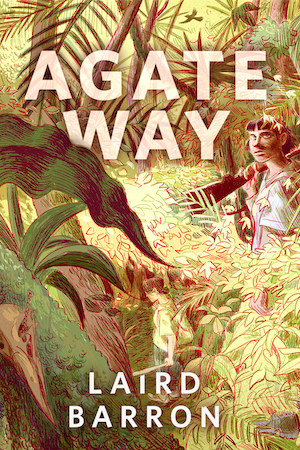







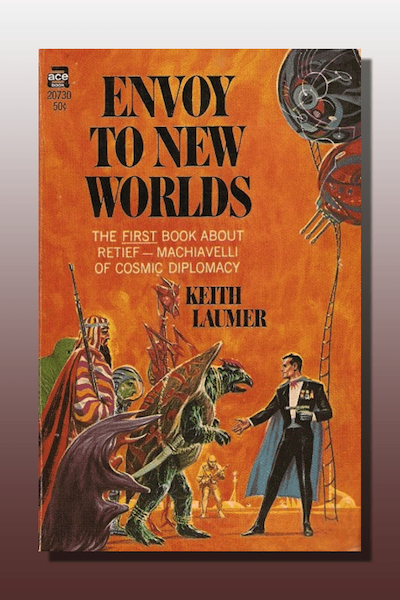

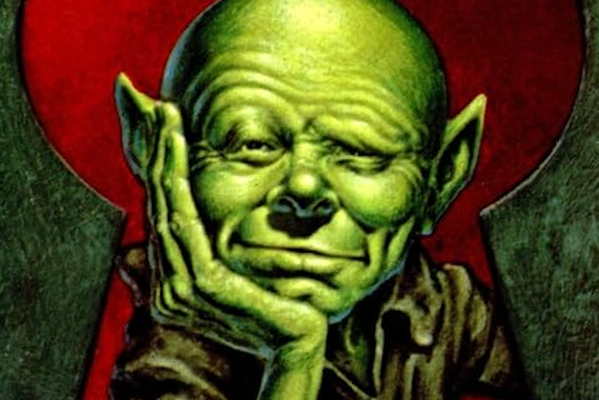
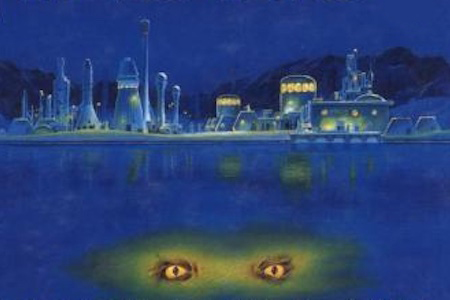

I found these earlier books, especially the short stories in Envoy to New Worlds, pretty enjoyable as you note, but I would caution that the series gets worse and worse as it goes on (doubtless in part due to Laumer’s health problems) — I’d ignore everything from the ’70s on.
I first ran across these when Retief’s War was reissued with Corbin Bernsen as the cover model in the 80s; I always liked those covers, even though all the evidence indicates Retief was not blond. That book was so much fun for teenage me that I bought all the reprints, and hunted down most of the rest of the series in used bookstores over the next ten years or so.
These actually probably qualify as books I loved that I’ll never read again, mostly because of the approach to the women characters. I choose to remember the raucous fun vibes instead.
I seem to recall Laumer saying the Retief was modelled on Cary Grant. At least physically. I really appreciate these Tor retrospective articles. I will dig out the old Laumer books.
I discovered the Retief books in a used bookstore the year he died and they were my introduction to Laumer’s books. I quickly devoured all of the ones they had. Retief is always fun to reread, particularly the puns.
I’m a big fan of these, so much so that I threw in an homage in a fanfic I wrote a few years back
There were two conceits in the Retief books that I always found amusing. The first was the occasional reference to “aged Pepsi” as a rare and valuable beverage, and the other was the way Laumer started creating a codified language of facial expressions, e.g.:
“A most perceptive observation, Chester,” Ambassador Earlyworm said, bestowing a 24-w (Gracious Condescension) leavened with a hint of 7-y (Expectation of Great Things in Due Course) on the lucky bureaucrat, at which his fellow underlings around the table were quick to bombard him with approbation, ranging from Faintlady’s 12.7-x (Knew You Had It In You, Fella) to Felix’s more restrained 119-a (We’re All Pulling For You, Lad), to which he responded with a shy 3-v (Modest Awareness of Virtue).
“In fact,” Earlyworm interjected a Cold Return to Objectivity (91-s) into the lightning interplay of ritual grimacing…
Even by the standards of the times, Laumer was over to one side of the bell curve where MCPery was concerned. I remember Spider Robinson being rather critical about Laumer’s sexism in Robinson’s review of Dinosaur Beach in the February 1976 issue of Galaxy.
I’d add a caveat in addition to the sexism thing: Laumer had the misfortune to suffer a stroke in 1971. Stories written after the stroke were often poorly written. Obs no fault of Laumer’s but it’s generally a good idea to stick to pre-1971 works.
He was working on The Ultimax Man when he had the stroke and I am convinced readers can spot the page where it happened.
My father was a career foreign service officer (’61-’93) and introduced me to the Retief series. I enjoyed them as a teenager although I’m not sure I could re-read them today for the reasons mentioned. Dad speculated that Laumer must have had foreign service experiences that encouraged him to satirize them.
For years I thought Laumer’s Brion Bayard stories started with the entirely mundane Embassy, then took a turn for the SFnal with Worlds of the Imperium. Publication dates do not support this: Worlds came first, then the sequel, then the chronologically early Embassy. Love to know the backstory on that…
@5,
Perhaps this s where the Liaden books got their endless series of bows.
@1 ecbatan. The Retief short stories are all better than the novels. The schtick works far better with brevity.
I remember loving these when I was a teenager (not long after they came out) and discussing them eagerly with a fellow reader (not an easy thing to find at that time). The problem I have now is that the CDT bureaucracy is frequently stupid but there’s never any question whether Earth is in the right in any dispute — not to mention less stupid than most aliens. Laumer is far from unique in this among authors of the period (Christopher Anvil, anyone?), but equating Earth with the US and the Groaci with the USSR seems more and more blind the more we learn about what the US was up to at that time; the appeasement-is-always-wrong theme that you cite also tends to confuse serious trouble with people who are tired of being abused.
@10: that’s true of a lot of schtick.
Great review! I remember reading and enjoying the books and stories bs k in my younger days. I especially enjoyed Retief’s War, largely due to the electromechanical aliens.
As Haterakan names go, Harrumph eas good, but my favorite was Hrucktooey (probably misspelled)
I also enjoy Retief best as short stories. But since I’ve always had small bites here and there of Retief, I always wondered whether Magnan was portrayed a little inconsistently just as a consequence of the medium or whether he showed any kind of growth and change over the course of his and Retief’s relationship. In some stories Magnan is a standard CDT bumbler, but in others he seems to be leveling up almost to competency, if not on Retief’s level.
And the Groaci are always a delight.
Isn’t some of the backstory addressed in Diplomat-at-Arms? Specifically, he was the last descendant of an Imperial noble house, and hence had been trained from boyhood in unarmed (and armed) combat.
“No, I can’t claim much credit there. I’ve had that document for many years. It, at least, was perfectly genuine.”